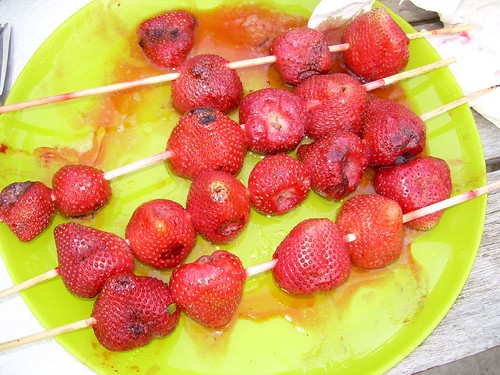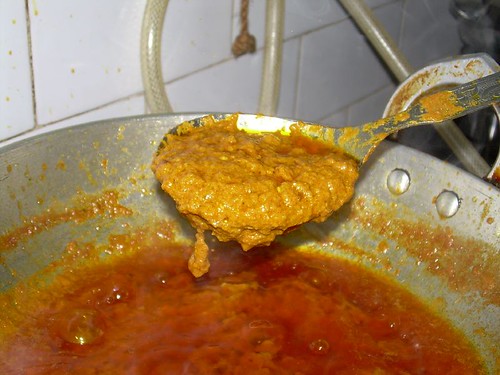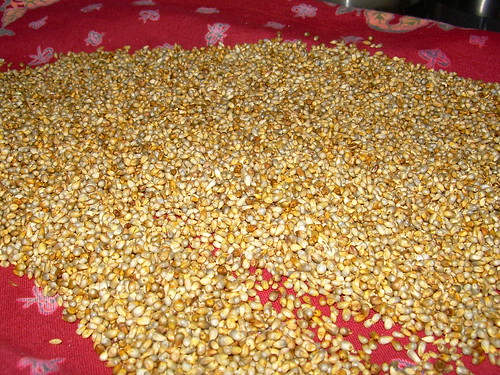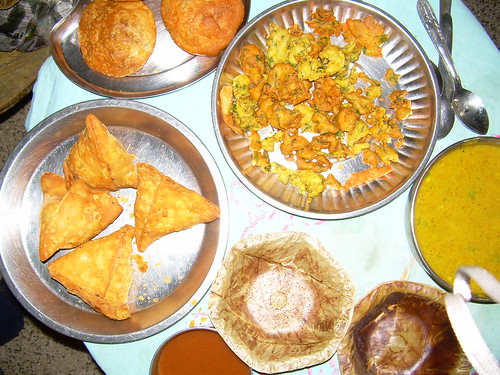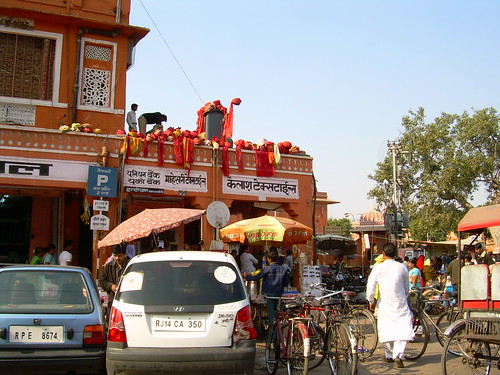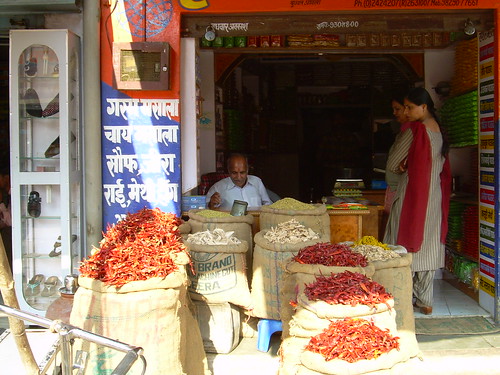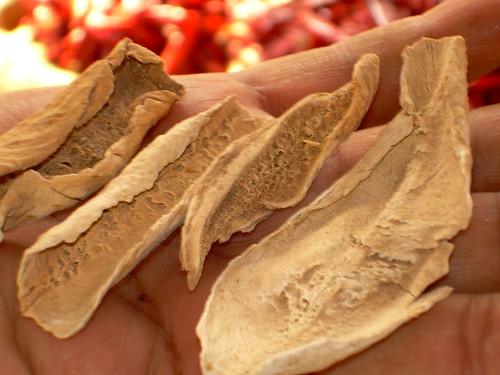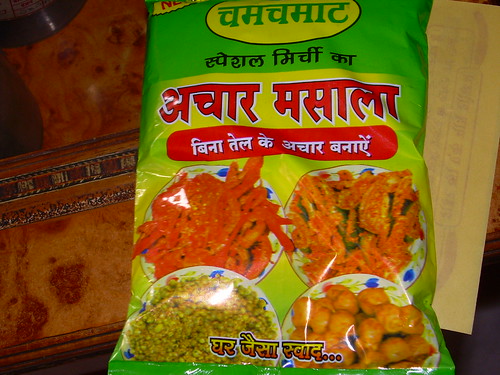Hi everyone! This is G reporting from India where plenty of eating and experimenting has been indulged in the past few weeks. However, the rains have disrupted my internet connection hence the delay in posting. I hope all of you are doing well and are ready to wish me and the blog Happy Bday.
Yes, yes. The B-day was 29th July. But remember the rains. And I have been soooooo late in responding to S's very patient request for the recipe below that I guess I was well served when I missed the JFI after my own heart - chillies! I guess its only fair.......

(Taporia served with Rice and Masoor Dal)
TAPORIA / BESAN MIRCH
This is one dish that I absolutely love and that I think epitomizes Rajasthani cooking - simple ingredients, short cooking time and immense flavor and heat.
As I have mentioned in an earlier post, this dish has also been one of my Waterloos - neither did I manage to get the taste right, nor the texture. This time I made it in front of Great-Aunt Shiela (as opposed to her talking me through it over the phone) and then I tried it again at home. I am pleased to announce that the taste is SPOT ON! The texture could use some work, though.
Ings:
Green Chillies - 4 large (large, not very spicy variety)
Oil - 1 tblsp
Mustard seeds - 1/2 tsp
Cumin seeds - 1/2 tsp
Heeng - 1/4 tsp
Besan/gram flour - 1 large tablespoon
Powders:
Corriander pwd - 1.5 tsp
Red chillie pwd - 1 tsp (adjust this to the hotness of the green chillies. The idea is to attain a balance of flavor and heat)
Amchur pwd - 2 tsp (again, the more hot the green chillies, the more amchur can be put to ameliorate the heat)
Haldi - 1 tsp
Saunf pwd - 1 tsp
Whole saunf - 1 tsp
Salt - to taste (efficacy of Indian salt is different from that of salt in the US so I wont hazard even a guess)
Method:
1. First, take besan in a vessel with a thick bottom and dry roast over a low flame till the color of the flour has changed (see pic) and a raw smell has gone (say 5-7 mins). Remove besan from the vessel. While this is happening you may cut the green chillies into large chunks.
Hint: The besan starts burning in a flash. So you cannot leave it unattended for long. Constant stirring may be needed.
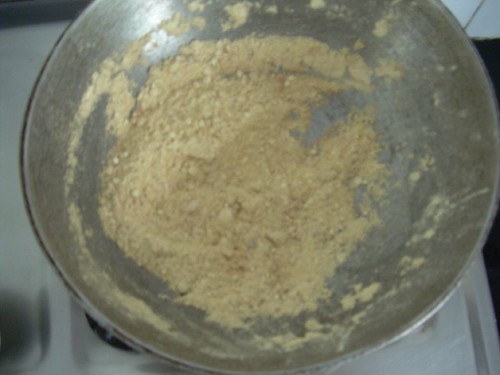
(Roasted Besan)
2. In the same vessel, heat oil, sputter the mustard seeds. Then add cumin seeds and heeng. Saute for 30 seconds. Add the green chillies and step away (this thing splatters like crazy). Maintain your safe distance, add 2 table spoons of water and put a lid on the vessel.

(Green chillies after cooking for 3-4 mins)
3. After 3-4 mins, remove lid and add all the powders. Dry roast for a bit. You can add another 2-3 table spoons of water to make sure the spices are done.
4. After 3-4 mins, add the roasted besan and stir. Any residual water that is left will be absorbed by the besan. Keep on flame for 30secs-1 min until everything is fully incorporated. Serve

In 15 mins you have a delicious side which uses the most minimal and common of ingredients. Thats what I call cooking.
You may wonder why it was so hard for me to make it all this time - well as you can see from the pic above the texture of my dish did not come out right even this time. The main problem was when and how much of water is to be added (in the current attempt I have added too much water). If you add too much......its a gooey mess. Too little means nothing is cooked and fully incorporated. For your reference I am also posting a picture of the 'perfect' taporia below made by great-aunt Shiela.

(The Perfect Texture)
This dish may take a little time to master but its a wonderful, quick side to keep in ones arsenal for those days with nothing much in the fridge and Rajasthan on the mind.
Btw, there is something else also that has kept me busy over the past fews weeks in India. I am getting married in November and my mom has been dragging me around on endless rounds of shopping. This despite the fact that she has been preparing(i.e. shopping) for this for years!
Which brings me to a question: Were any of you driven MAD by all your wedding preps? Most of my appalled reactions to the preps are along the lines of " Are you crazy spending so much money?!" or "I would rather die than sit on a stage!" or "How cheezy!" !! Is that just me? Or were you too like that? I havent attended an Indian wedding in about 10 years so I really have lost perspective on the entire wedding circus :)

